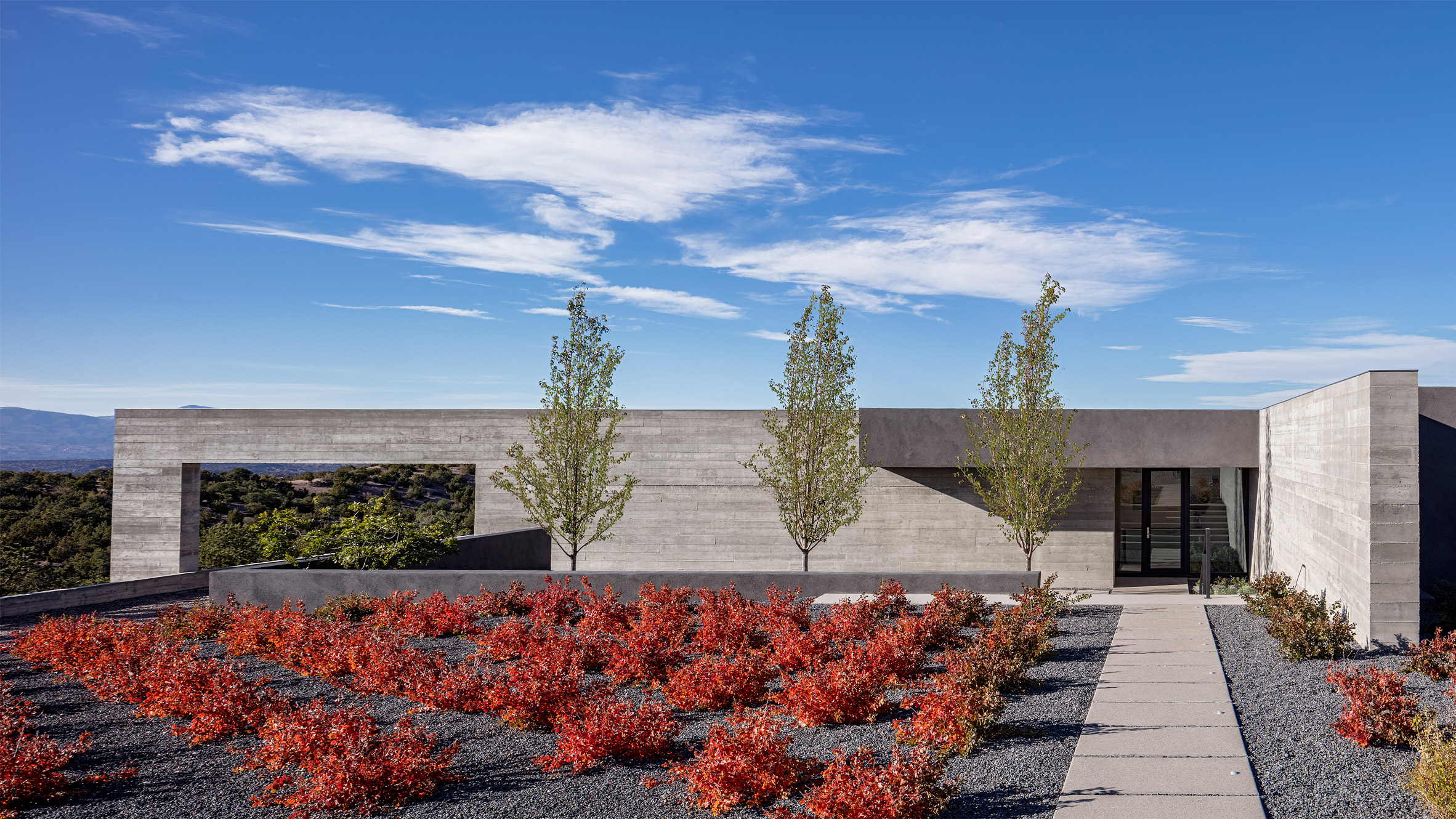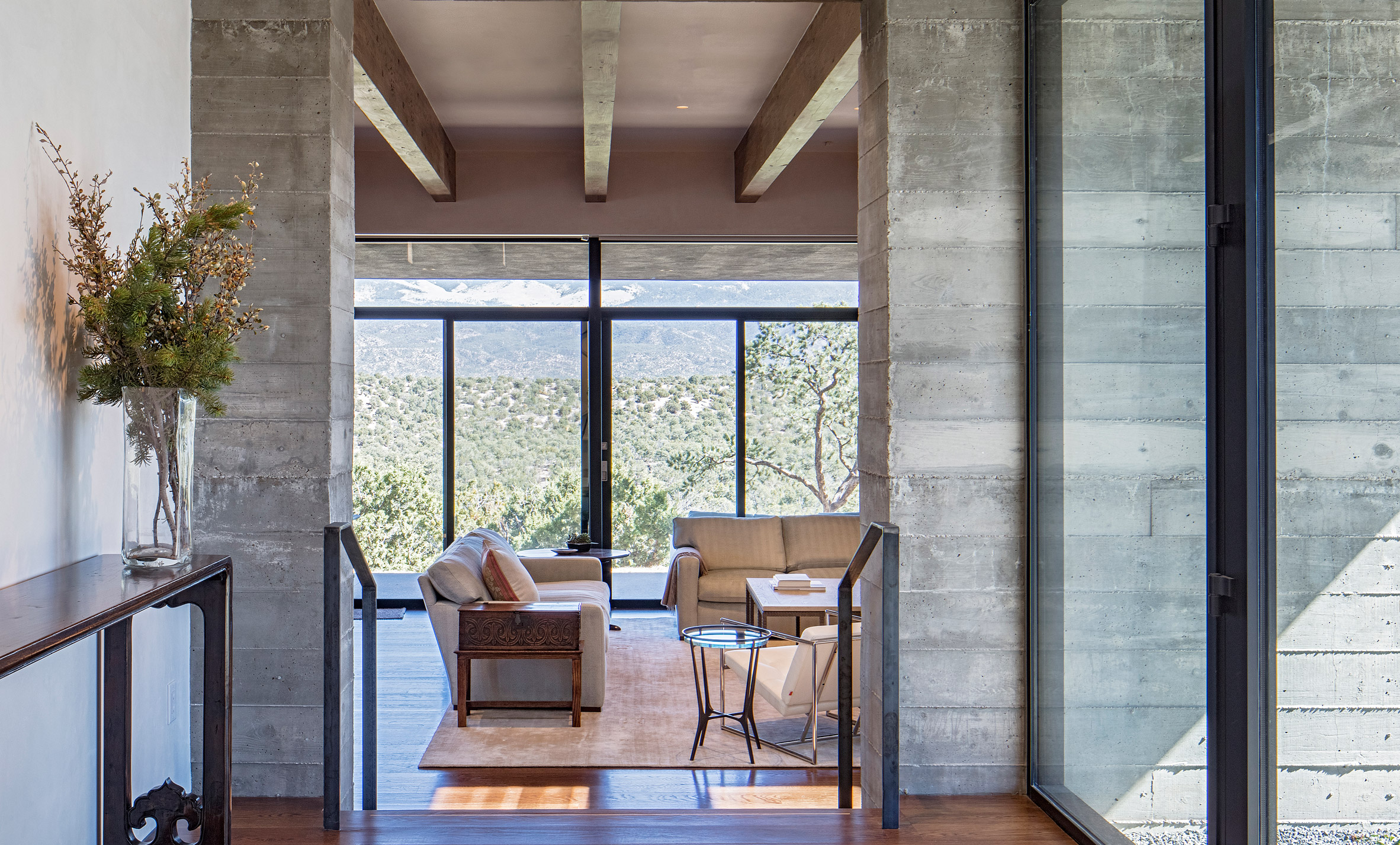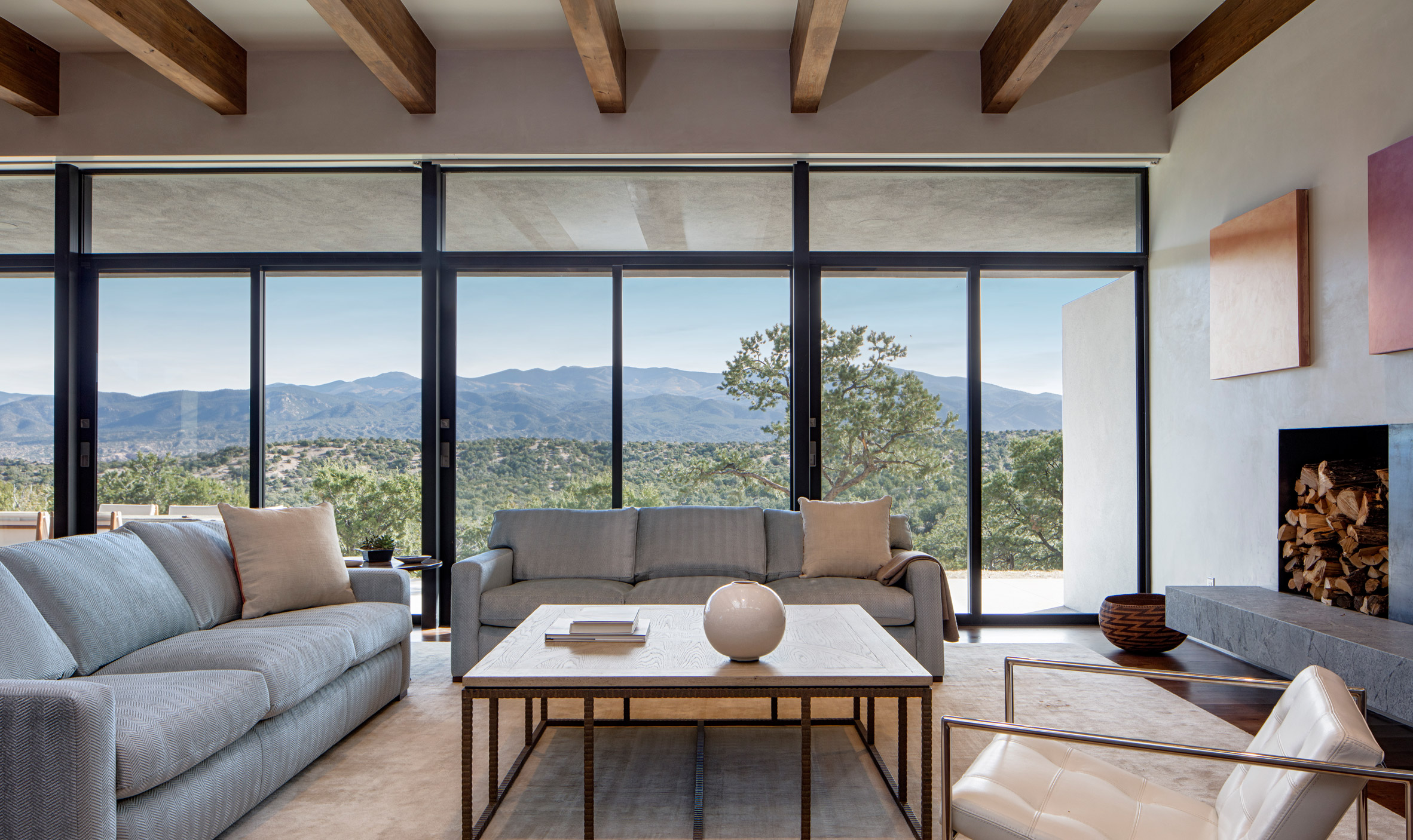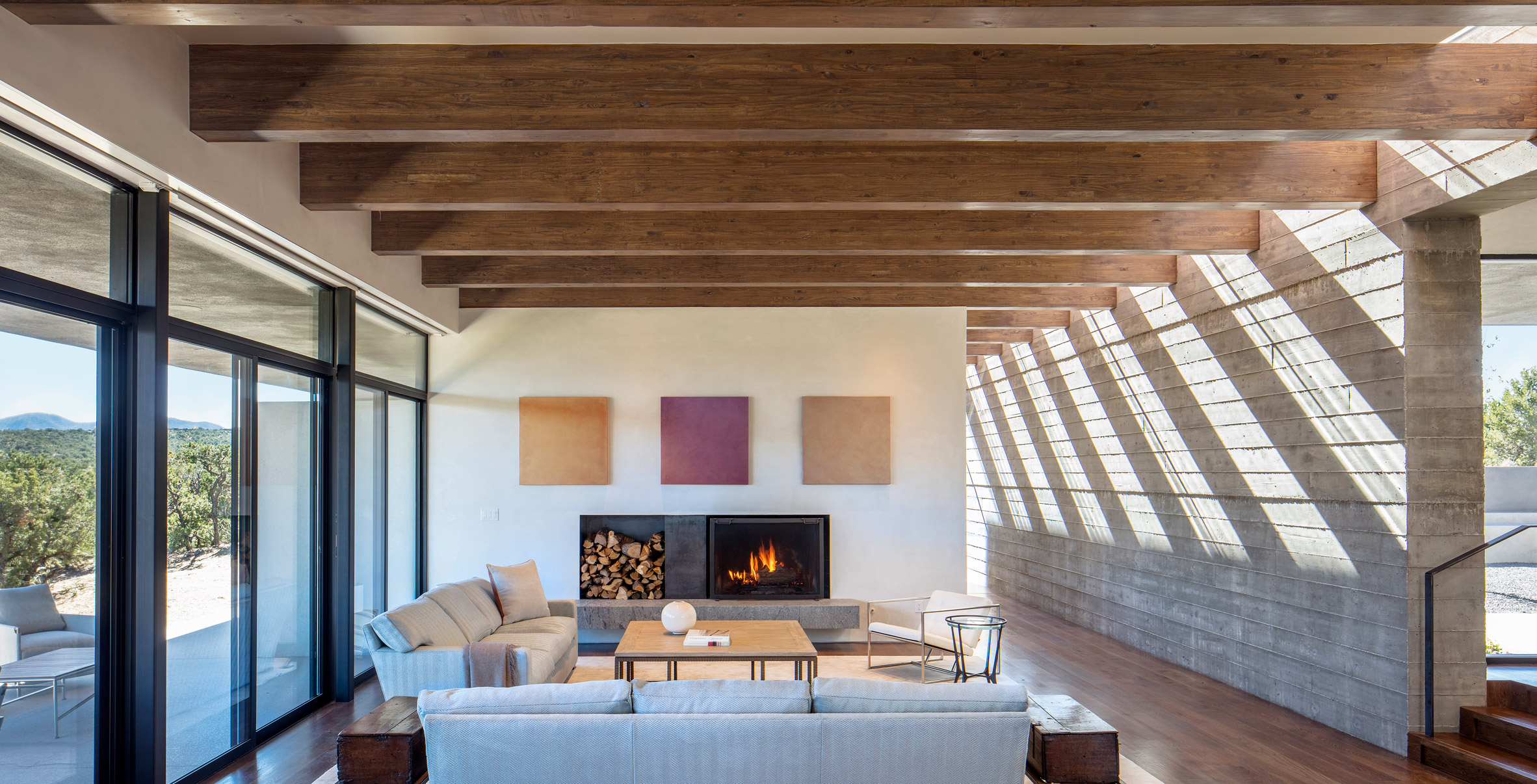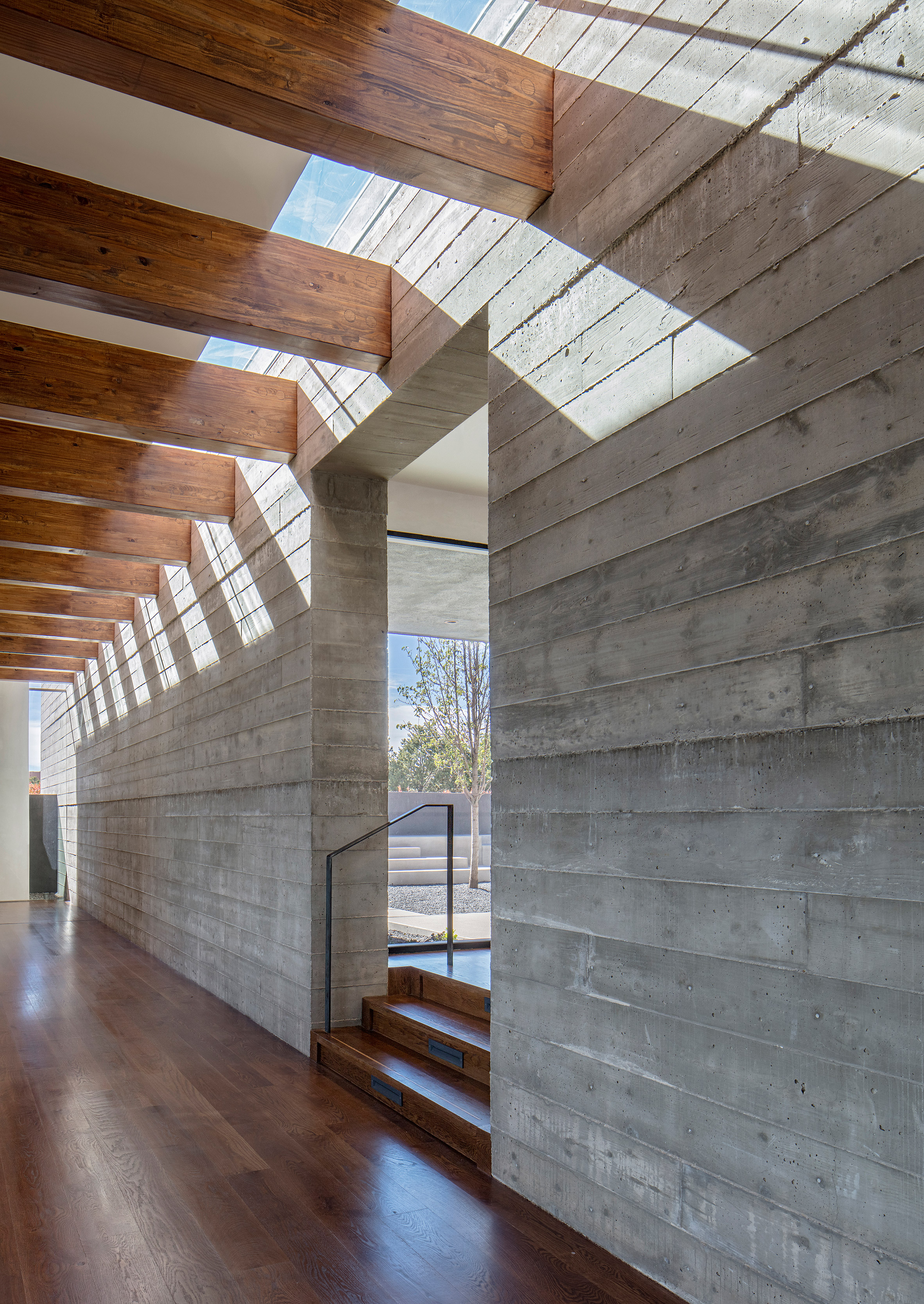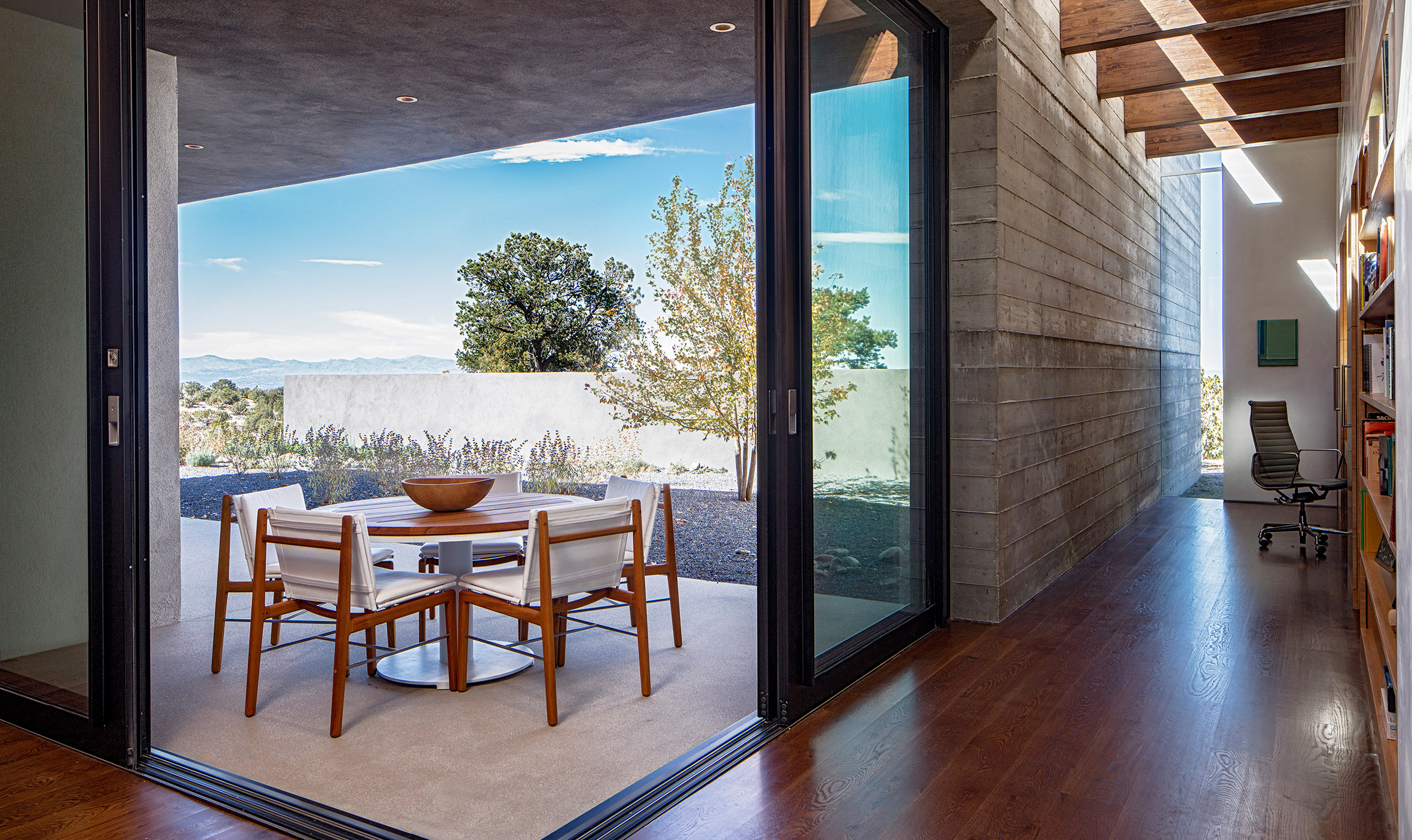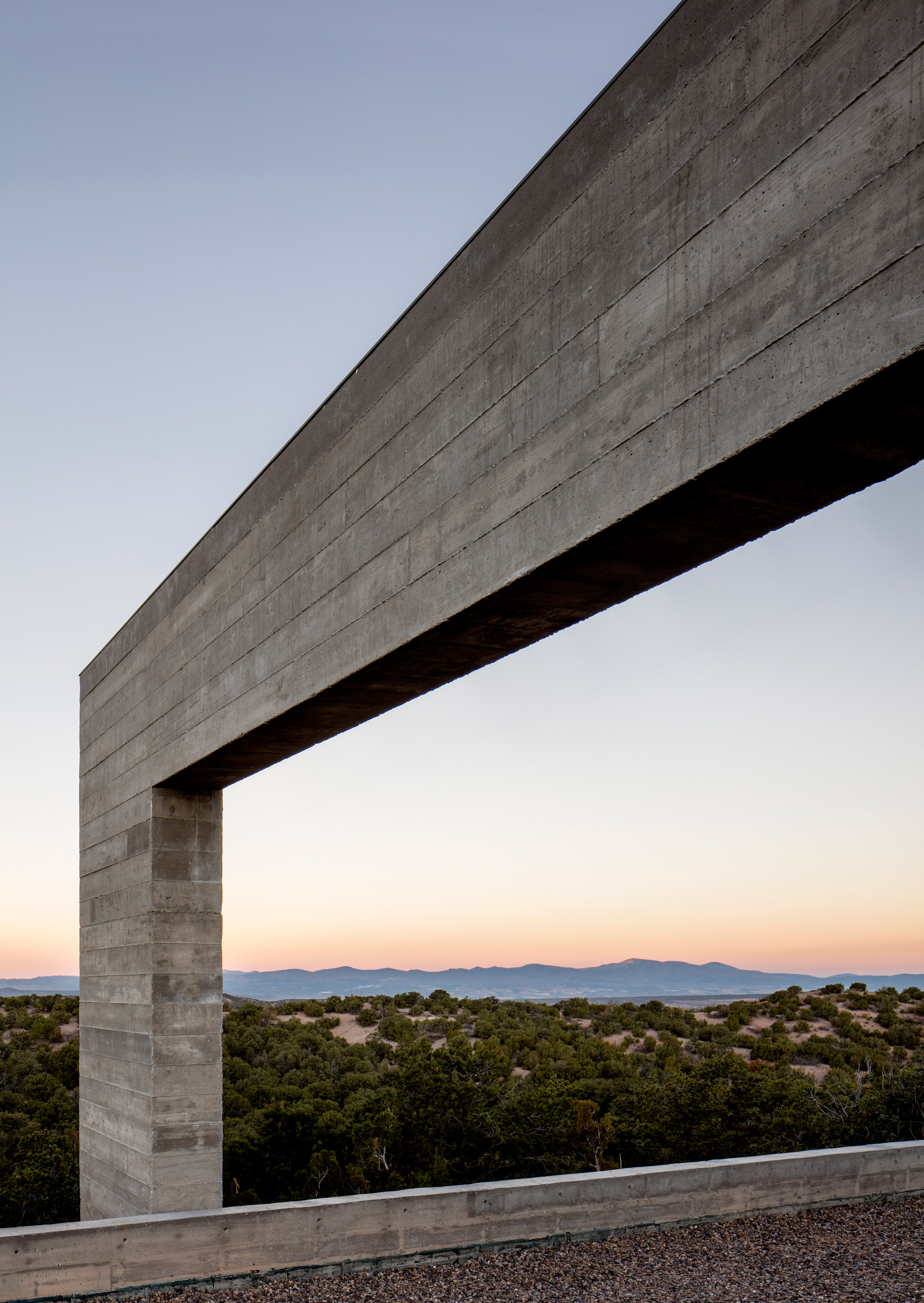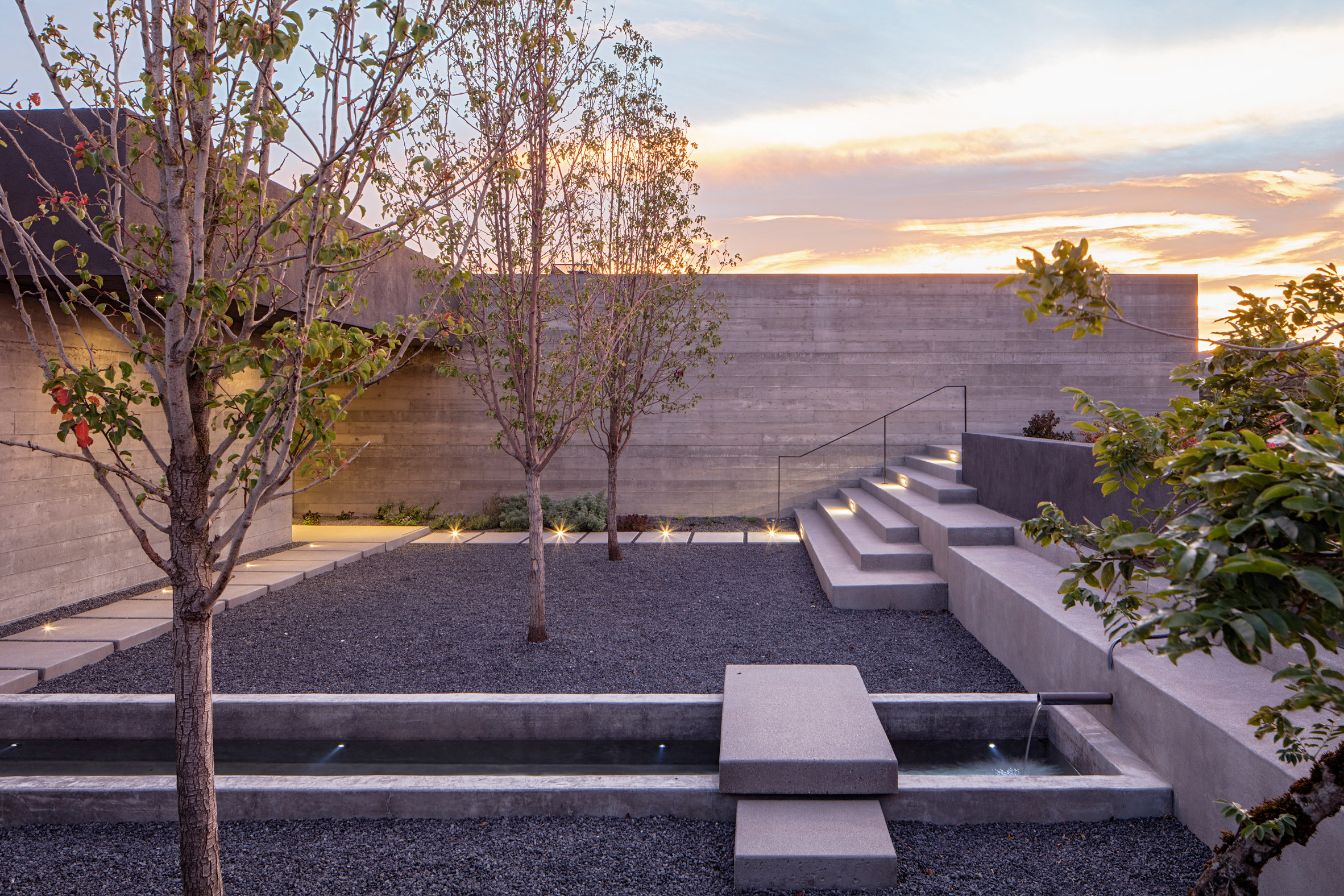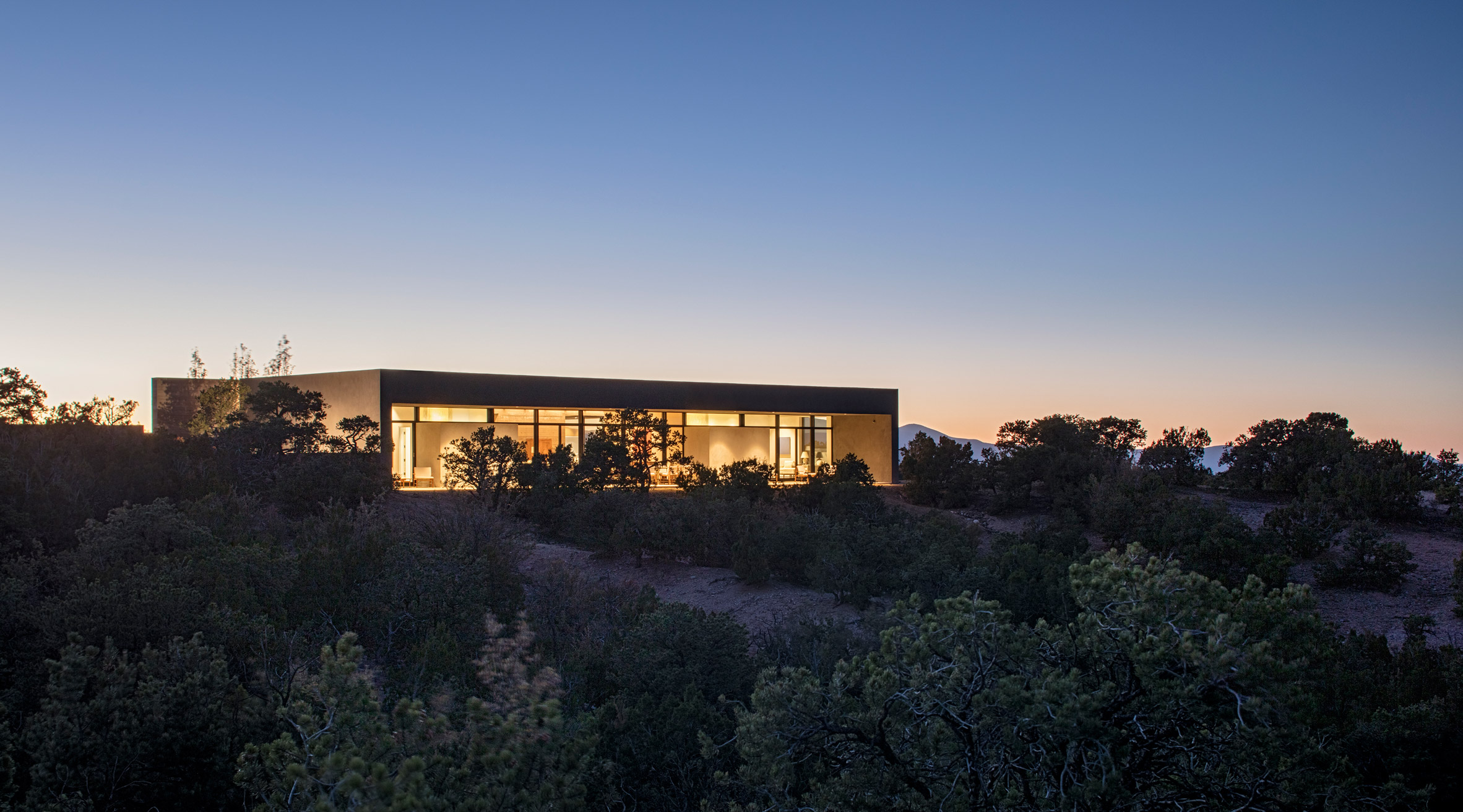Glazing in this Santa Fe concrete home by the American studio Specht Architects offers sweeping views of the distant mountains while casting shadow patterns across the interior walls.
The Sundial House is located in the characteristic landscape of the northern cities of New Mexico - wavy and arid terrain that reaches into the nearby mountains.
To meet the height restrictions of the region for buildings, the architects built the house on a sunken plane. From the road, a slabbed walkway passes through a terrace and through a stairway to an entrance into the courtyard.
Both level areas have gardens that extend to the western edge of the facade. The shrubs planted on the upper terrace balance the tall trees that rise above the lower enclosure.
The ash-land fill that fills both plots reinforces continuity between the gardens and creates a smooth transition to light gray from the outside of the house.
The structure itself is built around two perpendicular concrete walls, marked with a board in the recessed plane. Throughout the intersection, Specht Architects aimed to better connect the house with the surrounding landscape.
"This house in Santa Fe is organized around a pair of perpendicular concrete walls that orient the house toward specific points of view," said the firm, which has offices in Austin and New York.
The longest part extends from north to south, defining the boundary of the lower vestibule and cutting part of the raised terrace.
The east-west wall forms the entrance façade. Just before the two concrete partitions intersect, a threshold provides access to the house.
The plant is divided into two rectangular sections along the north-south wall. The entrance opens in the west half, which accommodates service rooms, a kitchen and a small bedroom.
Passing an opening to the right of the threshold, the east side extends along the partition to offer views of hills through the interior.
Two bedrooms with adjoining bathrooms flank a central living room. The cantilevered roof covers a courtyard that runs along the length of the east façade.
Emphasizing the division of the house, the ceiling and the walls of the volume are short of the north-south partition.
The architects covered the gap with a short strip of glazing covering the gap. The light admitted through the glass serves to provide added brightness and interior trim.
The shifting striations projected by the wooden ceiling beams resemble a sundial - the time-indicating device of which the residence bears its name.
"A long, slender skylight casts shadows on a high-textured concrete wall in the house," Scott's founder and director Scott Specht told Dezeen. "These shadows change throughout the day, and you can" feel "the passage of time because of changing lighting conditions."
Directing the house towards the best views of the landscape and including the temporary characteristics of the site to in the design, the architects tried to create a home that is well incorporated in its surroundings.
"The movement of the sun and the way the house incorporates and modulates this, really make the day an important part of the experience of the place," Specht said.
"The house also extends into the landscape, with concrete walls stretching from the inside out and into the landscape beyond," added the architect.
Other recently completed desert homes in the American Southwest include a residence housing a series of walled courtyards and an Arizona home elevated over the surrounding landscape.
The photograph is by Taggart Sorensen.
